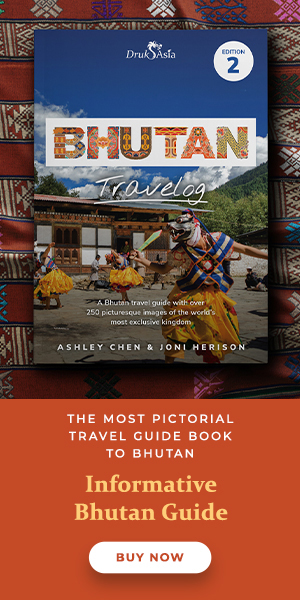BHUTAN
Travelog
What to Do in Bhutan for Art Lovers

For those who find joy in artistic expression, Bhutan is a dream destination. Tucked away in the Eastern Himalayas, this enchanting kingdom is not only known for its stunning monasteries and pristine landscapes but also for its rich artistic heritage. From intricate wood carvings to handwoven textiles and vibrant Thangka paintings, Bhutanese art is deeply spiritual, symbolic, and steeped in centuries-old tradition.
If you're an art lover wondering what to do in Bhutan, here's your guide to diving deep into the country's mesmerising world of traditional handicrafts and sacred art.
1. Visit the National Institute for Zorig Chusum (Thirteen Traditional Arts)
Located in the heart of Thimphu, the National Institute for Zorig Chusum is a must-visit for any art enthusiast. Often referred to as the “Painting School”, this institute is dedicated to preserving Bhutan’s thirteen traditional arts and crafts, collectively known as Zorig Chusum. These include:
- Lha-zo (painting)
- Par-zo (wood carving)
- Jim-zo (clay sculpting)
- Troe-ko (ornament making)
- Tshem-zo (embroidery and tailoring)
- ...and more.

Visitors can observe students meticulously practising these disciplines, creating intricate works by hand in the same way their ancestors did centuries ago.
Insider tip: Visit the small gift shop at the institute — it often stocks original student works that make meaningful, handmade souvenirs.
2. Discover Thangka Painting: A Spiritual Art Form
A visit to Bhutan is incomplete without exploring the profound beauty of Thangka paintings. These detailed Buddhist scrolls are not just art — they’re meditative tools, often depicting deities, mandalas, or scenes from the life of the Buddha.
Where to Explore Thangka Paintings:
- National Museum of Bhutan (Paro): Housed in a former watchtower, this museum has a fascinating collection of ancient Thangkas, some dating back hundreds of years.
- Private studios in Thimphu and Paro: Many accomplished Thangka artists run workshops or home studios where you can watch them work — or even commission your own piece.
- Monasteries: Thangkas are often displayed during religious festivals and ceremonies. The annual Paro Tshechu is a fantastic opportunity to witness a massive Thongdrol (a giant Thangka) being unfurled.
Did you know? A single Thangka can take months — sometimes years — to complete, depending on the size and complexity of the design.
3. Shop for Traditional Bhutanese Handicrafts
From handwoven textiles to carved masks and woven bamboo items, Bhutanese handicrafts are treasures worth discovering. Head to local craft markets and government-supported emporiums to find authentic, fair-trade items.
Top spots for art shopping:
- Bhutan Handicrafts Emporium (Thimphu): Run by the National Women’s Association of Bhutan, this shop offers high-quality textiles, Thangkas, and more.
- Simply Bhutan Living Museum (Thimphu): A great place to see artisans at work — and even try your hand at some crafts.
- Cottage & Small Industry Shops: Often overlooked, these smaller outlets in towns like Bumthang and Punakha feature locally made products at reasonable prices.
- The Craft Gallery: A dedicated showroom and retail space in Thimphu showcasing the finest works of Bhutanese artisans. Committed to preserving and promoting Bhutan’s rich craft heritage, the gallery supports the marketing and development of a wide range of traditional handicrafts.
Pro tip: Always ask about the story behind the item — Bhutanese art is rich with symbolism and tradition, and knowing the background makes each piece even more special.
4. Take a Thangka Painting or Weaving Workshop
Want to do more than just observe? Many local artists and cooperatives offer short workshops where you can learn basic techniques of Thangka painting or traditional weaving.
These workshops not only support local artisans but also offer a hands-on way to connect with Bhutanese culture. You'll gain a deep appreciation for the patience, precision, and spiritual discipline that go into each piece.

5. Attend Tsechus and Festivals with Art Displays
Tshechus — Bhutan’s colourful religious festivals — are visual feasts for art lovers. Dancers in elaborate costumes and masks perform age-old spiritual dances, often accompanied by stunning backdrops of traditional banners and art.
Highlights include:
During these events, you’ll witness vibrant art in motion — from hand-painted masks to ritual costumes and giant embroidered Thongdrols.
6. Visit Traditional Craft Villages
If your itinerary includes a stop in the Bumthang region, don’t miss the chance to explore the valleys known for weaving and wood carving. Ura and Chumey valleys are especially renowned for their textile production, with small family-run workshops open to visitors.
You’ll not only see how natural dyes and looms are used, but you’ll also get to interact with the artists themselves — many of whom have learned their craft from older generations.
For art lovers, Bhutan is an immersive canvas of cultural expression. Whether you’re admiring the fine lines of a Thangka painting, tracing the swirls of a wood carving, or watching a weaver at work on a traditional loom, you'll find that Bhutanese art is more than aesthetic; it's deeply spiritual, intentional, and rooted in a profound respect for tradition.
So pack your sketchbook, camera, and curiosity — Bhutan is waiting to inspire your artistic soul.
Follow Druk Asia on social media for inspiring travel stories, breathtaking photos, and the latest updates from Bhutan.
Ready to Experience the Magic of Bhutan?
Fill in the form below and the friendly Bhutan Travel Specialist team will get back to you with expert advice, itinerary ideas, and everything you need to know. No obligations, just warm guidance from those who know Bhutan best.
Thank you for your message!
Hang tight—one of our friendly Bhutan Travel Specialists from Druk Asia will be reaching out soon with expert tips, insider advice, and exciting itinerary ideas to help you plan the adventure of a lifetime!
Discover
Breathtaking
Bhutan.
Thank you for subscribing!
You have successfully subscribed to our newsletter.




